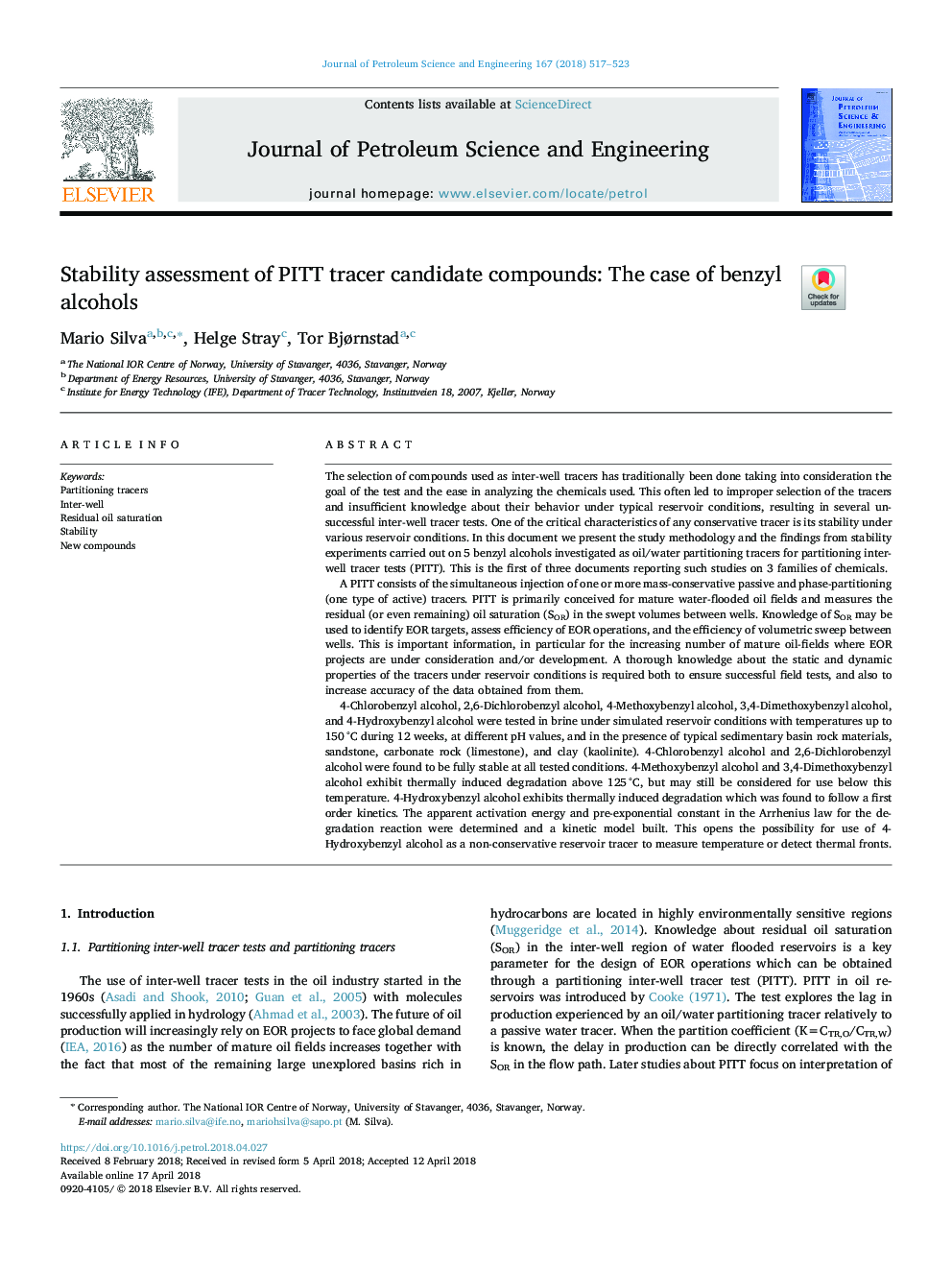| Article ID | Journal | Published Year | Pages | File Type |
|---|---|---|---|---|
| 8124825 | Journal of Petroleum Science and Engineering | 2018 | 7 Pages |
Abstract
4-Chlorobenzyl alcohol, 2,6-Dichlorobenzyl alcohol, 4-Methoxybenzyl alcohol, 3,4-Dimethoxybenzyl alcohol, and 4-Hydroxybenzyl alcohol were tested in brine under simulated reservoir conditions with temperatures up to 150â¯Â°C during 12 weeks, at different pH values, and in the presence of typical sedimentary basin rock materials, sandstone, carbonate rock (limestone), and clay (kaolinite). 4-Chlorobenzyl alcohol and 2,6-Dichlorobenzyl alcohol were found to be fully stable at all tested conditions. 4-Methoxybenzyl alcohol and 3,4-Dimethoxybenzyl alcohol exhibit thermally induced degradation above 125â¯Â°C, but may still be considered for use below this temperature. 4-Hydroxybenzyl alcohol exhibits thermally induced degradation which was found to follow a first order kinetics. The apparent activation energy and pre-exponential constant in the Arrhenius law for the degradation reaction were determined and a kinetic model built. This opens the possibility for use of 4-Hydroxybenzyl alcohol as a non-conservative reservoir tracer to measure temperature or detect thermal fronts.
Related Topics
Physical Sciences and Engineering
Earth and Planetary Sciences
Economic Geology
Authors
Mario Silva, Helge Stray, Tor Bjørnstad,
